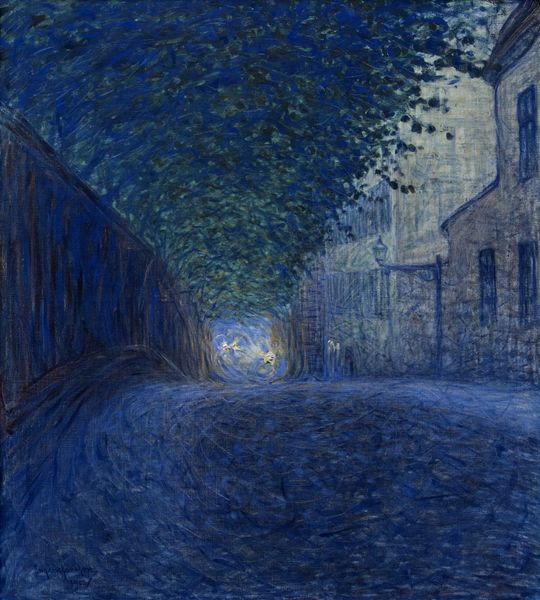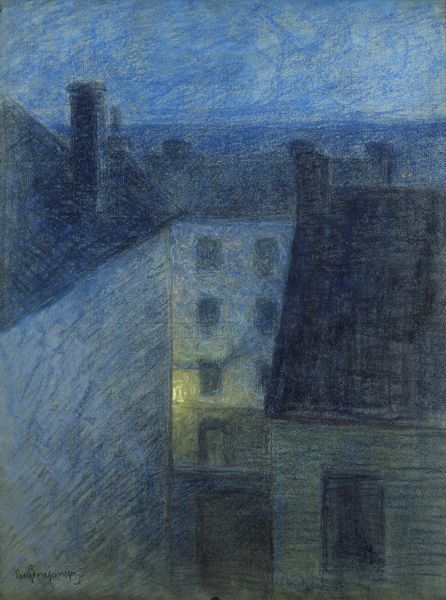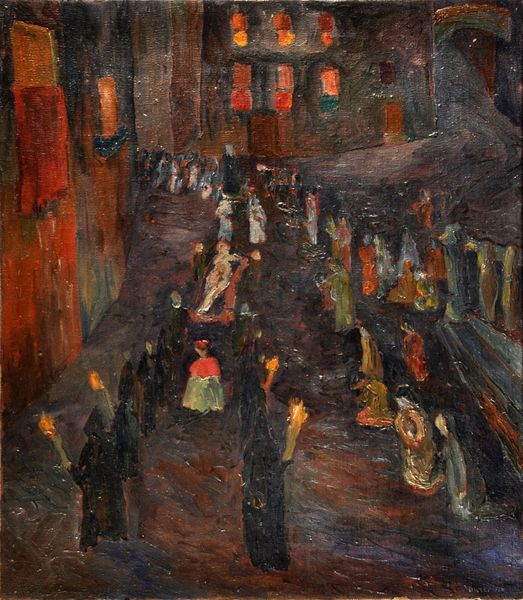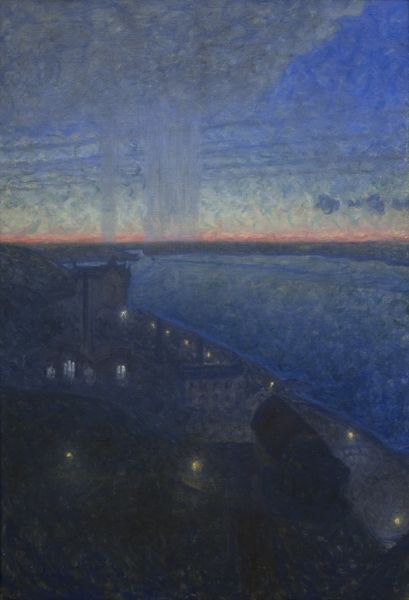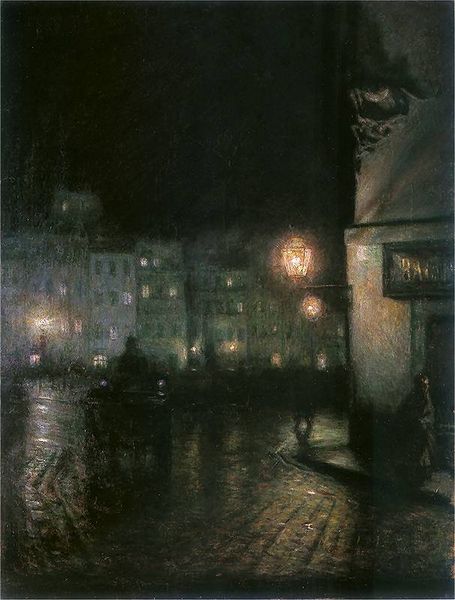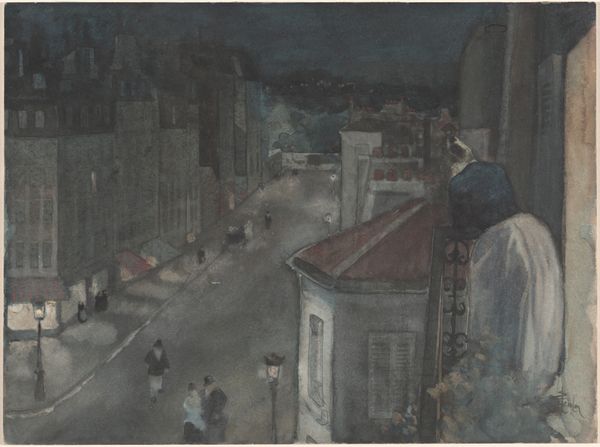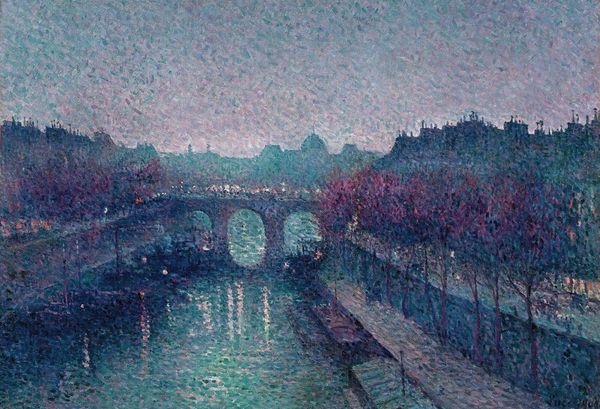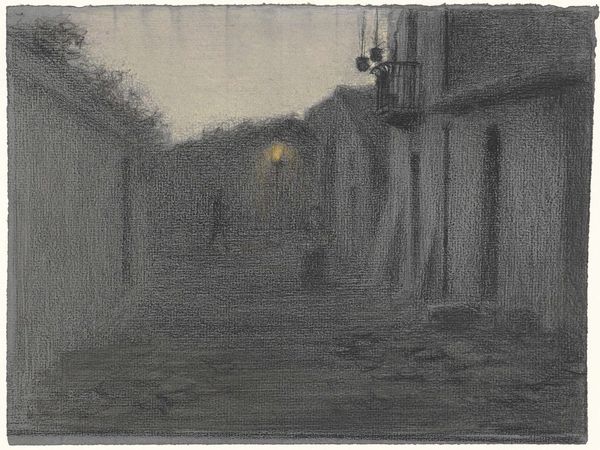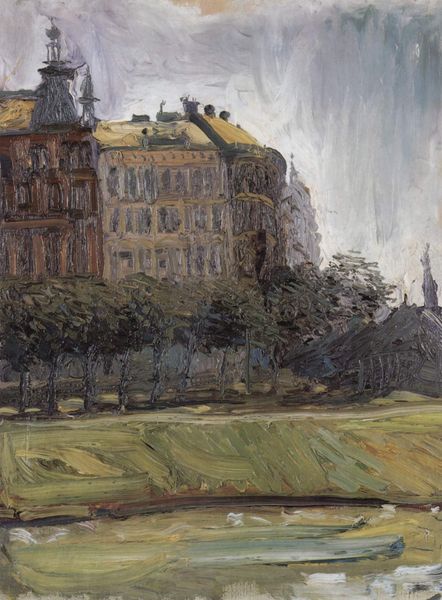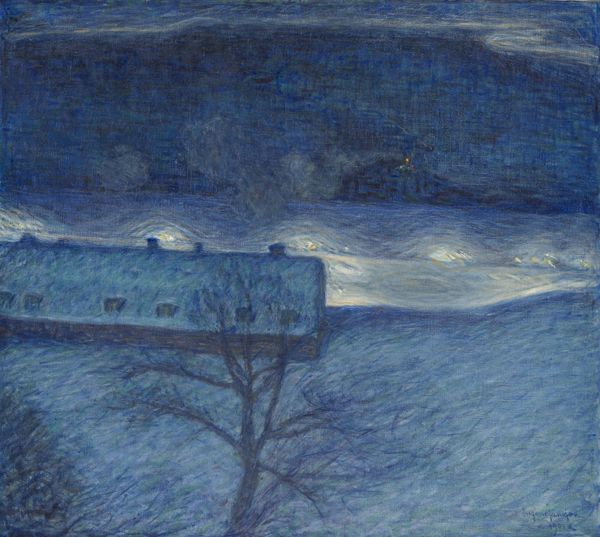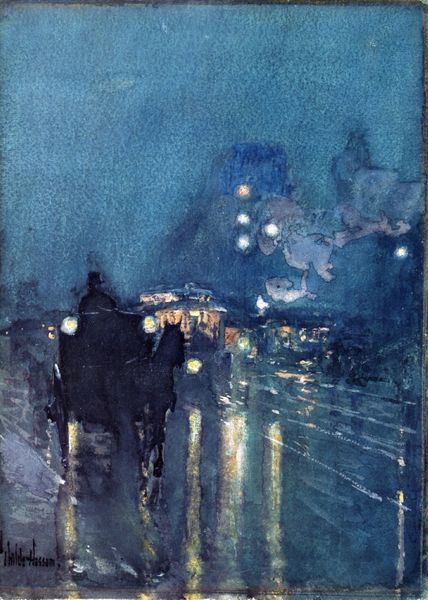
Dimensions: 96 cm (height) x 70 cm (width) (netto)
Editor: So, this is Karl Nordström's "Roslag Street, Stockholm," painted between 1893 and 1897. It’s oil on canvas, and the overall mood is pretty somber, almost eerie with those flickering lights. What strikes you about it? Curator: Well, for me, this cityscape transcends a simple depiction of Stockholm. Consider the context: late 19th century, rapid urbanization, growing class disparities, and societal anxieties bubbling beneath the surface. Don't you see it as a symbolist exploration of urban alienation and the isolating effect of modernization? The darkness and sparse light hint at a deeper psychological unease. Editor: I see what you mean. The near absence of people definitely contributes to that feeling. So it’s not just a street, but a commentary? Curator: Precisely. The almost monochromatic palette reinforces that sense of melancholic introspection, wouldn’t you agree? Nordström wasn’t merely painting a street; he was painting a feeling, a mood of the times. What if that feeling reflects the displacement of rural populations to urban centers where jobs were increasingly scarce during times of social upheaval? How can art act as a refuge? Editor: I hadn't thought about it that way. It makes me reconsider the buildings, not just as structures but as imposing forces contributing to that alienation. I initially focused on the surface level of this piece. Curator: That’s often the challenge. Now consider the formal aspects – the compressed perspective, the stark contrast between light and shadow. How might these techniques contribute to our understanding of power structures and societal divisions? Can art give us insight into issues such as income inequality and urban crime? Editor: This has opened my eyes to a deeper understanding of art’s role beyond aesthetics; art as a mirror and a voice to socio-political concerns. I realize this picture goes deeper than mood alone. Curator: Absolutely. And understanding those connections between art, history, and social dynamics is crucial to interpreting not just this work, but all art.
Comments
No comments
Be the first to comment and join the conversation on the ultimate creative platform.
